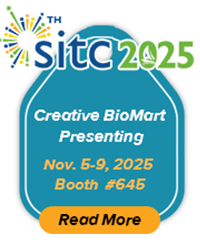Active Recombinant Human APP Protein, His/GST-tagged
| Cat.No. : | APP-192H |
| Product Overview : | Recombinant Human APP(Asp 672-Val 711) fused with His/GST tag at N-terminal was expressed in E. coli. |
- Specification
- Gene Information
- Related Products
- Download
| Species : | Human |
| Source : | E.coli |
| Tag : | GST&His |
| Protein Length : | Asp 672-Val 711 |
| Description : | Amyloid precursor protein (APP) is a type I transmembrane protein expressed in many tissues and concentrated in the synapses of neurons, and is suggested as a regulator of synapse formation and neural plasticity. APP can be processed by two different proteolytic pathways. In one pathway, APP is cleaved by β- and γ-secretase to produce the amyloid-β-protein (Aβ, Abeta, beta-amyloid) which is the principal component of the amyloid plaques, the major pathological hallmark of Alzheimer’s disease (AD), while in the other pathway, α-secretase is involved in the cleavage of APP whose product exerts antiamyloidogenic effect and prevention of the Aβ peptide formation. The aberrant accumulation of aggregated beta-amyloid peptides (Abeta) as plaques is a hallmark of AD neuropathology and reduction of Abeta has become a leading direction of emerging experimental therapies for the disease. Besides this pathological function of Abeta, recently published data reveal that Abeta also has an essential physiological role in lipid homeostasis. Cholesterol increases Abeta production, and conversely A beta production causes a decrease in cholesterol synthesis. Abeta may be part of a mechanism controlling synaptic activity, acting as a positive regulator presynaptically and a negative regulator postsynaptically. The pathological accumulation of oligomeric Abeta assemblies depresses excitatory transmission at the synaptic level, but also triggers aberrant patterns of neuronal circuit activity and epileptiform discharges at the network level. Abeta-induced dysfunction of inhibitory interneurons likely increases synchrony among excitatory principal cells and contributes to the destabilization of neuronal networks. There is evidence that beta-amyloid can impair blood vessel function. Vascular beta-amyloid deposition, also known as cerebral amyloid angiopathy, is associated with vascular dysfunction in animal and human studies. Alzheimer disease is associated with morphological changes in capillary networks, and soluble beta-amyloid produces abnormal vascular responses to physiological and pharmacological stimuli. |
| Predicted N Terminal : | Met |
| Form : | Lyophilized from sterile 50mM Tris, 500mM NaCl, pH 7.5 1. Normally 5 % - 8 % trehalose, mannitol and 0.01% Tween80 are added as protectants before lyophilization. Specific concentrations are included in the hardcopy of COA. 2. Please contact us for any concerns or special requirements. |
| Bio-activity : | Measured by its ability to bind biotinylated recombinant human AGER in a functional ELISA. |
| Molecular Mass : | The recombinant human Beta-APP40/GST chimera consists of 278 amino acids and has a calculated molecular mass of 31.8 kDa. It migrates as an approximately 33 kDa band in SDS-PAGE under reducing conditions. |
| Purity : | > 92 % as determined by SDS-PAGE |
| Stability : | Samples are stable for up to twelve months from date of receipt at -70 centigrade |
| Storage : | Store it under sterile conditions at -20 centigrade to -80 centigrade. It is recommended that the protein be aliquoted for optimal storage. Avoid repeated freeze-thaw cycles. |
| Gene Name | APP amyloid beta (A4) precursor protein [ Homo sapiens ] |
| Official Symbol | APP |
| Synonyms | APP; amyloid beta (A4) precursor protein; AD1, Alzheimer disease; amyloid beta A4 protein; peptidase nexin II; preA4; protease nexin-II; peptidase nexin-II; beta-amyloid peptide; alzheimer disease amyloid protein; cerebral vascular amyloid peptide; AAA; AD1; PN2; ABPP; APPI; CVAP; ABETA; PN-II; CTFgamma; |
| Gene ID | 351 |
| mRNA Refseq | NM_000484 |
| Protein Refseq | NP_000475 |
| MIM | 104760 |
| UniProt ID | P05067 |
| ◆ Recombinant Proteins | ||
| App-3440M | Recombinant Mouse App, His-tagged | +Inquiry |
| APP-3850H | Recombinant Human APP, His & GST-tagged | +Inquiry |
| APP-5154H | Recombinant Human APP Protein, Myc/DDK-tagged, C13 and N15-labeled | +Inquiry |
| APP-62H | Recombinant Human APP Protein, Fc-tagged | +Inquiry |
| APP-231H | Recombinant Human APP Protein, His-tagged | +Inquiry |
| ◆ Cell & Tissue Lysates | ||
| APP-3087HCL | Recombinant Human APP cell lysate | +Inquiry |
Not For Human Consumption!
Inquiry
- Reviews (0)
- Q&As (0)
Ask a Question for All APP Products
Required fields are marked with *
My Review for All APP Products
Required fields are marked with *



